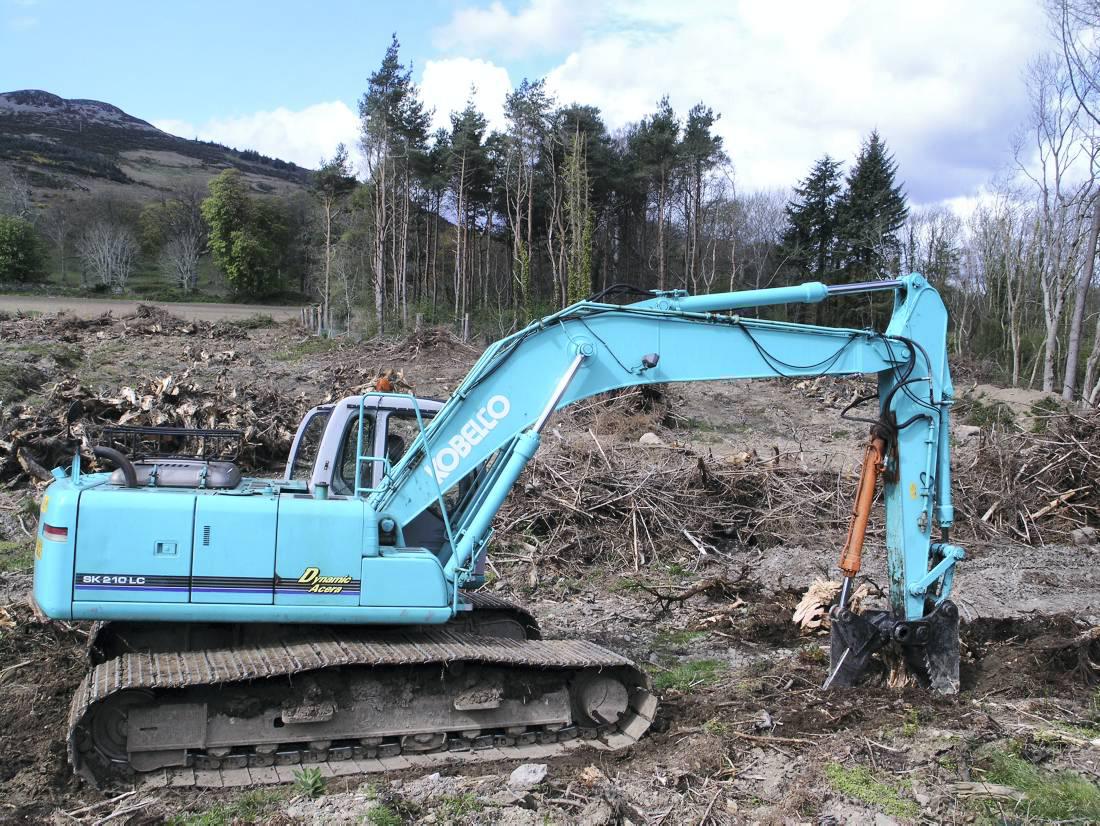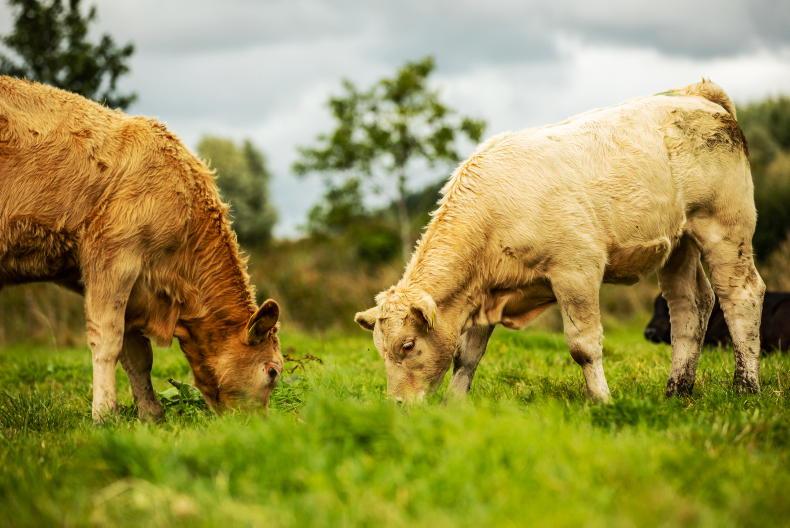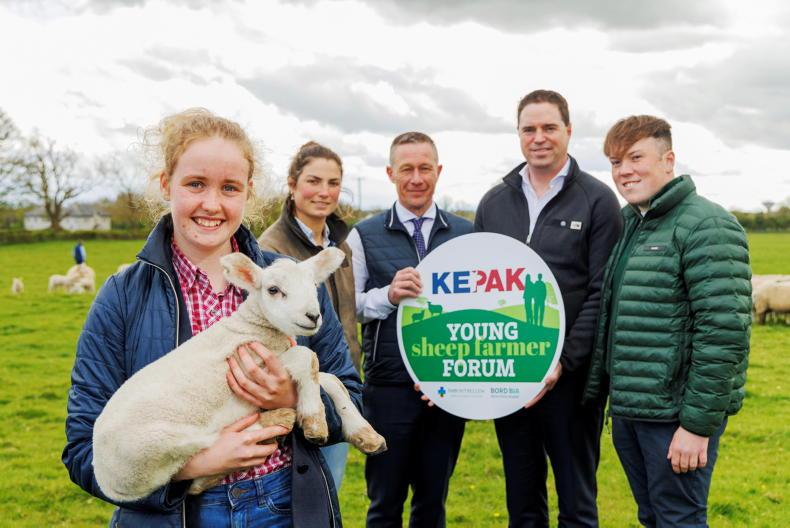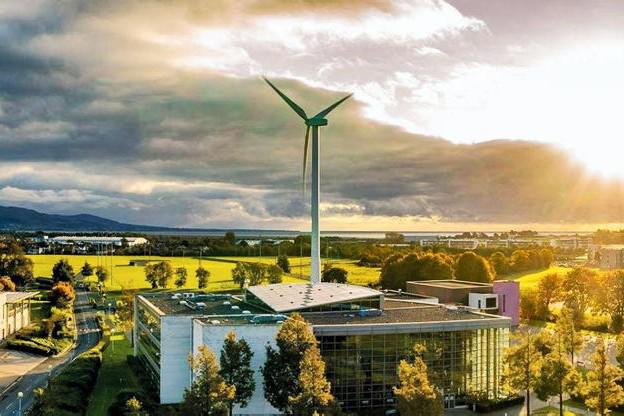Five forestry research projects were recently launched as part of an overall research awards programme for agri-food and forestry. Under the 2014 Research Call, funding is also being provided for a new Graduate Development Programme. “This aims to provide an interface between industry and academia through the provision of industry-relevant education, including innovation and entrepreneurship focused courses,” claimed Minister for Agriculture
Simon Coveney.
“I particularly welcome the forestry research awards which, in a sense, are the first fruits of the ‘Forest Research Ireland’ strategic agenda that I launched in October,” said Tom Hayes, Minister of State with responsibility for forestry.
These were developed by a forest industry-led group in COFORD, the forestry representative body that advises the Department on development issues in the sector. The following forestry projects are being funded:
Improving timber forecasting.Windthrow risk modelling.Assessing Ireland’s risk to airborne spread of ash dieback disease. Pre-commercial stump harvesting in Ireland.Economic and environmental mapping of cascade use of wood.TIMBER FORECASTING
The forecast model project will be led by Dr Niall Farrelly of Teagasc in collaboration with Prof Maarten Niewenhuis of UCD. It will examine forest growth and modelling aimed at improving the private-sector timber production forecast.
“Methods will be explored to examine how inventory and forest management plan data can be utilised as inputs to the national forecasting system,” said Dr Farrelly. “The project will provide further information on accessibility of private plantations, management intentions of private forest owners in order to derive a more robust management regime for forecasting. A cost/benefit analysis of the use of different methods and data for national forecasting will be conducted.”
WINDTHROW RISK
Every year Ireland is subject to normal storms but occasionally severe storms are experienced and climatologists maintain that these may become more frequent. The high wind speeds associated with these storms result in the uprooting and breakage of trees as forest owners, especially in Cork, Kerry and Limerick, experienced last February during Storm Darwin.
The negative economic and environmental effects of these storms are obvious and forest owners wish to know if they can adopt silvicultural practices that would minimise the risk of windblow.
The aim of the a Windthrow risk modelling project is “to determine the factors that influence the risk of wind damage and generate a model that can be used to assess that risk”, explained Dr. Aine Ni Dhubhain, project co-ordinator and senior lecturer in forestry, UCD. “We plan to investigate thinning practices and forest design influences and make recommendations on how to minimise risk,” she said.
ASH DIEBACK
Ash dieback is the first major disease which threatens to wipe out a species in Ireland since Dutch elm disease. Ash dieback Chalara fraxinea is caused by the fungus Hymenoscyphus pseudoalbidus, whose spores are dispersed in the wind. Led by Dr Jon Yearsley, the UCD Ecological Modelling Research Group will assess the potential of ash dieback disease to spread across Ireland. This project, which funds a one-year postdoctoral researcher, is a collaboration between UCD, the University of Cambridge and the Forest Service.
The modelling work will predict likely wind-dispersed plumes of fungal spores from sites, in Ireland and overseas, infected by ash dieback disease. The modelling uses climate data from Met Eireann, the latest biological data on the fungus and the UK Met Office’s Atmospheric Dispersion model.
STUMP HARVESTING
Irish timber growers, processors and harvesters utilise the main stem or ‘timber’ part of the tree, leaving tops, branches and roots behind. “It is becoming more apparent that all parts of the tree have value, as Ireland’s need for wood biomass is increasing due to demand for fibre and fuel,” maintained Tom Kent who is leading the Research Plus – pre-commercial stump harvesting in Ireland project in Waterford Institute of Technology (WIT).
This project is timely as a COFORD study estimated that there will be an annual shortfall of supply by the year 2020 of approximately 1.6 million cubic metres if only currently employed wood supply chains are used. Whole tree – including stump – harvesting is widely practised in Scandinavia, and may be able to contribute to biomass requirements in Ireland.
“Harvesting stumps will not be suitable on all forest sites, as the environmental and site fertility impacts may be high, so the limitations to sustainable harvesting need to be described,” said Kent.
WIT will use funding to develop industry experience and capacity to commercialise stump harvesting and develop guidelines on the site conditions suitable for removing stumps. The project objectives are:
Determine machine system costs, productivity, fuel consumption and capacity for wood fuel production.Provide guidelines on the environmental impact of stump harvesting in terms of carbon life cycle analysis, soil compaction and fertility and water framework implications. Investigate simple accurate methods of quantifying wood fuel and characterising quality for payment purposes.This project will benefit forest owners who will have access to experienced contractors, customised machine systems and a developed market for stump biomass.
CARBON STORAGE
Previous models of carbon storage in forest ecosystems and harvested wood products have developed independently, as has data on biomass and economic measures of the forest industry in Ireland.
A project known as CASWOOD or Economic and environmental mapping of cascade use of wood aims to provide a coherent picture of the interaction and interdependence of all sectors in the wood chain. “This project will provide a holistic profile of the current position of carbon storage and biomass potential,” said Dr Ken Byrne, project co-ordinator based in University of Limerick.
The CASWOOD model will merge these data streams and also include data on wood recycling.
FUNDING
Total funding for all Department projects is over €20m. Funding of €710,000 is being provided for forestry research projects which is welcome but at 3% of total funding is modest. However, there are other forestry projects ongoing and proposals for longer-term research programmes are being considered to reflect the long-term nature of forestry.
One project not featured under forestry is the Teagasc-led A Bio Economy for Ireland. The findings of this project will have a major impact on both forestry and agricultural development in Ireland.
The project aims to provide “an evaluation of development opportunities, policies and initiatives shaping Ireland’s transformation to a sustainable low carbon bio economy”. Forests have a major role to play in this transformation because of their acknowledged benefits in reducing greenhouse gas.
Forestry and agriculture are therefore interlinked which is why forestry stakeholders should play a key role in this project.
Five forestry research projects were recently launched as part of an overall research awards programme for agri-food and forestry. Under the 2014 Research Call, funding is also being provided for a new Graduate Development Programme. “This aims to provide an interface between industry and academia through the provision of industry-relevant education, including innovation and entrepreneurship focused courses,” claimed Minister for Agriculture
Simon Coveney.
“I particularly welcome the forestry research awards which, in a sense, are the first fruits of the ‘Forest Research Ireland’ strategic agenda that I launched in October,” said Tom Hayes, Minister of State with responsibility for forestry.
These were developed by a forest industry-led group in COFORD, the forestry representative body that advises the Department on development issues in the sector. The following forestry projects are being funded:
Improving timber forecasting.Windthrow risk modelling.Assessing Ireland’s risk to airborne spread of ash dieback disease. Pre-commercial stump harvesting in Ireland.Economic and environmental mapping of cascade use of wood.TIMBER FORECASTING
The forecast model project will be led by Dr Niall Farrelly of Teagasc in collaboration with Prof Maarten Niewenhuis of UCD. It will examine forest growth and modelling aimed at improving the private-sector timber production forecast.
“Methods will be explored to examine how inventory and forest management plan data can be utilised as inputs to the national forecasting system,” said Dr Farrelly. “The project will provide further information on accessibility of private plantations, management intentions of private forest owners in order to derive a more robust management regime for forecasting. A cost/benefit analysis of the use of different methods and data for national forecasting will be conducted.”
WINDTHROW RISK
Every year Ireland is subject to normal storms but occasionally severe storms are experienced and climatologists maintain that these may become more frequent. The high wind speeds associated with these storms result in the uprooting and breakage of trees as forest owners, especially in Cork, Kerry and Limerick, experienced last February during Storm Darwin.
The negative economic and environmental effects of these storms are obvious and forest owners wish to know if they can adopt silvicultural practices that would minimise the risk of windblow.
The aim of the a Windthrow risk modelling project is “to determine the factors that influence the risk of wind damage and generate a model that can be used to assess that risk”, explained Dr. Aine Ni Dhubhain, project co-ordinator and senior lecturer in forestry, UCD. “We plan to investigate thinning practices and forest design influences and make recommendations on how to minimise risk,” she said.
ASH DIEBACK
Ash dieback is the first major disease which threatens to wipe out a species in Ireland since Dutch elm disease. Ash dieback Chalara fraxinea is caused by the fungus Hymenoscyphus pseudoalbidus, whose spores are dispersed in the wind. Led by Dr Jon Yearsley, the UCD Ecological Modelling Research Group will assess the potential of ash dieback disease to spread across Ireland. This project, which funds a one-year postdoctoral researcher, is a collaboration between UCD, the University of Cambridge and the Forest Service.
The modelling work will predict likely wind-dispersed plumes of fungal spores from sites, in Ireland and overseas, infected by ash dieback disease. The modelling uses climate data from Met Eireann, the latest biological data on the fungus and the UK Met Office’s Atmospheric Dispersion model.
STUMP HARVESTING
Irish timber growers, processors and harvesters utilise the main stem or ‘timber’ part of the tree, leaving tops, branches and roots behind. “It is becoming more apparent that all parts of the tree have value, as Ireland’s need for wood biomass is increasing due to demand for fibre and fuel,” maintained Tom Kent who is leading the Research Plus – pre-commercial stump harvesting in Ireland project in Waterford Institute of Technology (WIT).
This project is timely as a COFORD study estimated that there will be an annual shortfall of supply by the year 2020 of approximately 1.6 million cubic metres if only currently employed wood supply chains are used. Whole tree – including stump – harvesting is widely practised in Scandinavia, and may be able to contribute to biomass requirements in Ireland.
“Harvesting stumps will not be suitable on all forest sites, as the environmental and site fertility impacts may be high, so the limitations to sustainable harvesting need to be described,” said Kent.
WIT will use funding to develop industry experience and capacity to commercialise stump harvesting and develop guidelines on the site conditions suitable for removing stumps. The project objectives are:
Determine machine system costs, productivity, fuel consumption and capacity for wood fuel production.Provide guidelines on the environmental impact of stump harvesting in terms of carbon life cycle analysis, soil compaction and fertility and water framework implications. Investigate simple accurate methods of quantifying wood fuel and characterising quality for payment purposes.This project will benefit forest owners who will have access to experienced contractors, customised machine systems and a developed market for stump biomass.
CARBON STORAGE
Previous models of carbon storage in forest ecosystems and harvested wood products have developed independently, as has data on biomass and economic measures of the forest industry in Ireland.
A project known as CASWOOD or Economic and environmental mapping of cascade use of wood aims to provide a coherent picture of the interaction and interdependence of all sectors in the wood chain. “This project will provide a holistic profile of the current position of carbon storage and biomass potential,” said Dr Ken Byrne, project co-ordinator based in University of Limerick.
The CASWOOD model will merge these data streams and also include data on wood recycling.
FUNDING
Total funding for all Department projects is over €20m. Funding of €710,000 is being provided for forestry research projects which is welcome but at 3% of total funding is modest. However, there are other forestry projects ongoing and proposals for longer-term research programmes are being considered to reflect the long-term nature of forestry.
One project not featured under forestry is the Teagasc-led A Bio Economy for Ireland. The findings of this project will have a major impact on both forestry and agricultural development in Ireland.
The project aims to provide “an evaluation of development opportunities, policies and initiatives shaping Ireland’s transformation to a sustainable low carbon bio economy”. Forests have a major role to play in this transformation because of their acknowledged benefits in reducing greenhouse gas.
Forestry and agriculture are therefore interlinked which is why forestry stakeholders should play a key role in this project.










SHARING OPTIONS